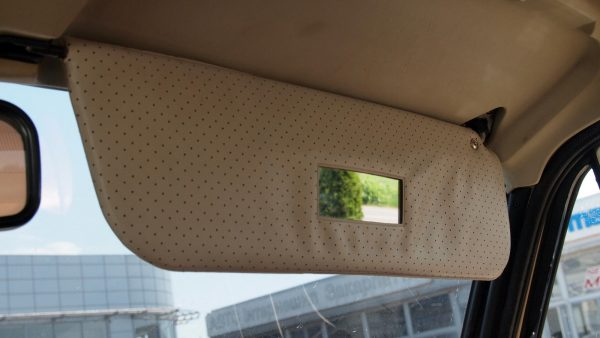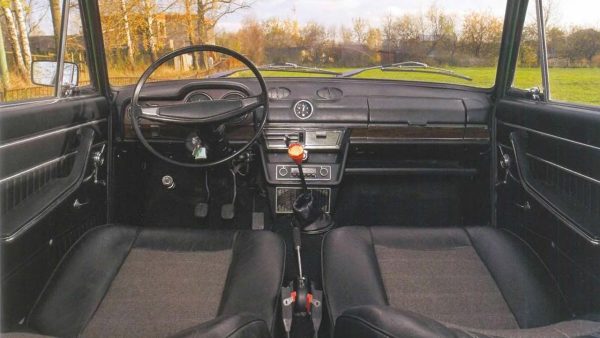
Description and modernization of the VAZ 2103 cabin
Content
VAZ 2103 was released in 1972. At that time, the car was considered the pinnacle of the domestic automotive industry, especially when compared with the previous model - the VAZ 2101. The interior was especially admired by car owners - simple, but at the same time convenient and practical. However, today it needs significant improvements and tuning.
Salon VAZ 2103
The prototype of the "three rubles" according to the tradition of the Volga Automobile Plant was the previous model - "penny". And although much has been changed in the external appearance and interior decoration, all the same, some important features of all VAZs have remained unchanged.
The main changes for the better in the VAZ 2103 compared to the VAZ 2101 affected the interior:
- Thanks to the thoughtfulness of the exterior, headroom has increased by 15 mm, and the distance from the ceiling of the car to the seat cushion has increased to 860 mm.
- The designers hid all the disadvantages of the “penny” interior and in the “three-ruble note” the peeking sections of the metal elements were hidden behind the plastic sheathing. Thus, the entire interior is sheathed with plastic materials, which significantly decorated the interior of the car.
 The VAZ 2103 model has become really more spacious and comfortable for passengers compared to the “penny”, and all the metal parts of the body have disappeared under the plastic lining
The VAZ 2103 model has become really more spacious and comfortable for passengers compared to the “penny”, and all the metal parts of the body have disappeared under the plastic lining - The ceiling of the VAZ 2103 was sheathed with leatherette fabric "into a hole". In the Soviet Union, such a performance was considered the most fashionable and aesthetically beautiful. The perforated fabric also covered the sun visors.
 The perforated fabric that covers the sun visors and the ceiling was considered the pinnacle of aesthetics at the time when the VAZ 2103 was mass-produced
The perforated fabric that covers the sun visors and the ceiling was considered the pinnacle of aesthetics at the time when the VAZ 2103 was mass-produced Rubberized mats were placed on the floor - this is the most convenient option for operating a car at any time of the year.
The seats became a little wider and more comfortable, but they did not have head restraints. For the convenience of the driver and front passenger, for the first time, armrests were installed on the doors and in the central part between the seats. By the way, the armrests were really comfortable and created a feeling of comfort on long trips.
 The seats became a little wider, but the lack of headrests did not allow a person to feel completely comfortable in them.
The seats became a little wider, but the lack of headrests did not allow a person to feel completely comfortable in them.
The main difference between the “three-ruble note” and the previous model is, of course, a dashboard that was modern for those times. For the first time, such important instruments as a mechanical watch, pressure gauge, and tachometer were simultaneously embedded into the panel of a domestic car.
Only when you open the door to the passenger compartment of the car, you notice that the “three-ruble note” steering wheel was inherited from your grandmother - VAZ 2101. The steering wheel is large, thin, but the designers made sure that it “fits” easily in the hand and the driver did not experience problems with control.
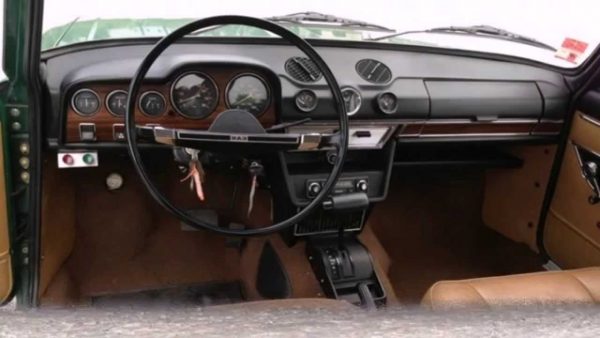
And behind the wheel there are three control levers at once - turning on the high beam, as well as the right and left turn signals. The only thing that would strike a modern car enthusiast is the placement of the windshield washer button on the floor, near the clutch. To be honest, it is very inconvenient to control the washer and wipers with your foot. Our generation of drivers is not used to such a device.
The instrument panel is very simple by modern standards: there are only five instruments, each of them is as easy to read as possible. The total mileage of the car on the speedometer is limited to 100 thousand kilometers. Then the indicators are reset and the score goes on a new one. Therefore, the VAZ 2103 will always have an official mileage of no more than 100 thousand kilometers!

Video: a brief overview of the treshka salon in 1982
Do-it-yourself cabin soundproofing
With all the novelty of the built-in elements and increased comfort, the main trouble of the VAZ still remained in the new model - the “three-ruble note” inherited the noise of the entire cabin when driving. Rumble, vibrations and noises during the movement could not hide even the factory soundproofing. Therefore, most car owners decided to independently cope with the main problem of all domestic cars of that time.
Soundproofing the cabin with your own hands is not an easy job, and besides, it is quite expensive, because the material itself is not cheap. However, significant savings can be made if the work is carried out partially, rather than isolating the entire interior completely.


To work, you will need simple tools and auxiliary materials:
- cutting knife;
- adhesive composition;
- building hair dryer;
- tape measure and ruler;
- set of wrenches;
- openings.
Table: recommended materials
| Vibration isolation of the door, roof, hood, rear shelf, rear fenders, trunk, arches, trunk lid | Noise isolation, vibration isolation SGP A-2 | 24 sheet | 7,2 sq.m. |
| Vibration isolation of the floor, engine compartment | Noise isolation, vibration isolation SGP A-3 | 7 Sheets | 2,1 sq.m. |
| General soundproofing | Noise isolation, vibration isolation SGP ISOLON 4 | 12 Sheets | 12 sq.m. |
Underbody soundproofing
Soundproofing the bottom of the car will significantly reduce the noise level while driving. It is not difficult to do this work on your own, but you will need the ability to work with power tools and a lot of patience:
- Dismantle seats, floor mats and floor coverings from the passenger compartment. Dismantling takes a little time - all elements are fixed with bolts and screws that need to be unscrewed.
- Clean the bottom of dirt and rust with a metal brush - it is very important to carry out sound insulation on a clean surface.

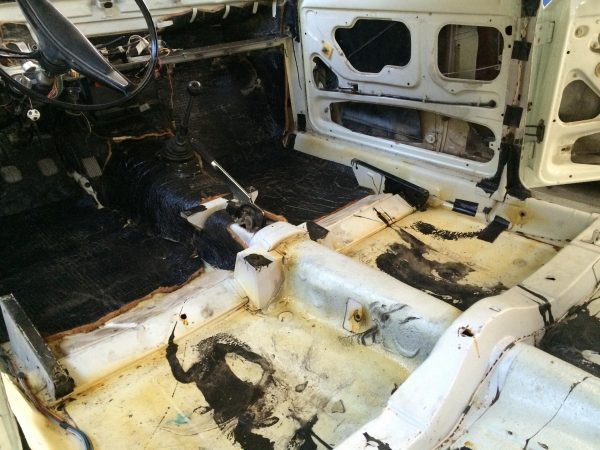 It is important to properly clean the bottom from dirt and traces of corrosion.
It is important to properly clean the bottom from dirt and traces of corrosion. - Degrease the metal - for this it is best to use acetone.
- Prepare a template - having made appropriate measurements of the floor of the car, it is necessary to make a cardboard pattern in order to fit the soundproofing material to the bottom as accurately as possible.
- According to the cardboard pattern, cut out the desired configuration of the material for work.
- Attach the material to the bottom so that not a single corner in the cabin remains uncovered by the “shumka”.
- Carefully cover the bottom with anti-corrosion paint.

 First, the bottom of the car is covered with anti-corrosion paint.
First, the bottom of the car is covered with anti-corrosion paint. - Without waiting for the paint to dry completely, start gluing the material: first, it is recommended to lay vibration protection, and then sound insulation. It is forbidden to seal any wires and holes in the bottom of the car - you will need to think in advance how to bypass them.

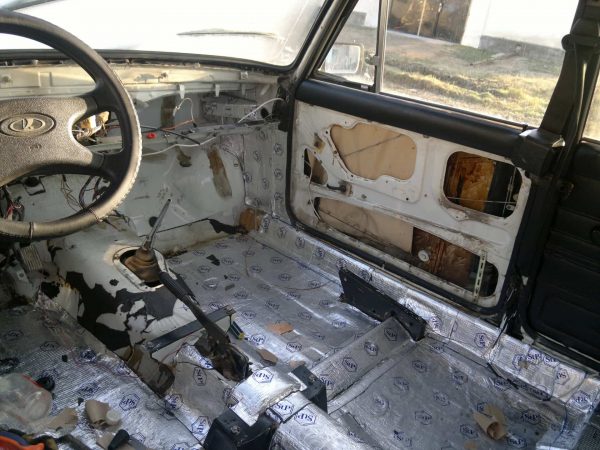 The material is applied to a special adhesive for noise insulation
The material is applied to a special adhesive for noise insulation - Install interior elements in reverse order. You can put linoleum on the visible parts of the cabin.

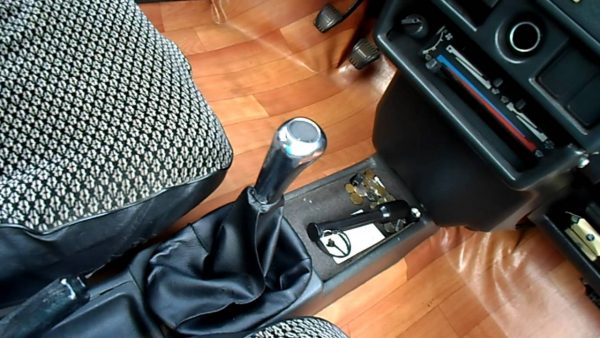 Linoleum can be put on soundproofing for aesthetics
Linoleum can be put on soundproofing for aesthetics
Soundproofing doors
The first step is to remove the decorative trim from the doors. It is important not to scratch the plastic, as the appearance can be spoiled with one awkward movement of a screwdriver.. The decorative trim can be easily removed from the door, you just need to snap off the latches and pull it towards you.
Noise insulation of VAZ 2103 doors takes place in several stages: just laying one layer of "shumka" is not enough:
- Remove factory soundproofing.

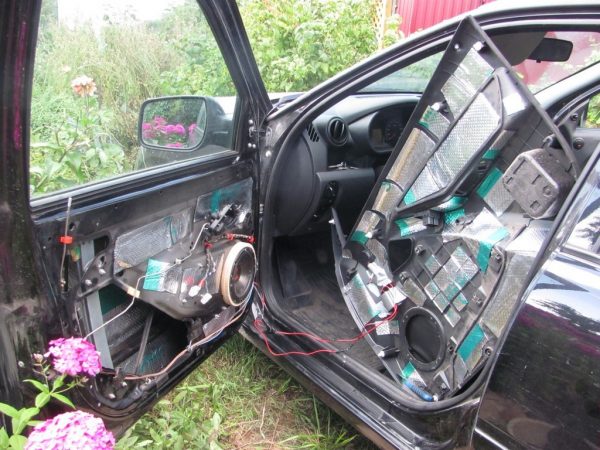 All wires must be carefully separated from the terminals so that they can then be connected back.
All wires must be carefully separated from the terminals so that they can then be connected back. - Clean the installation sites, remove dirt and rust using metal brushes.
- Coat the inside of the door with anti-corrosion paint.
- Without waiting for the substance to dry, glue the first layer of vibration protection on the “street” side of the door. This layer is designed to protect the interior from the vibrations of the door itself while driving. In this case, the stiffening ribs must remain uncovered.

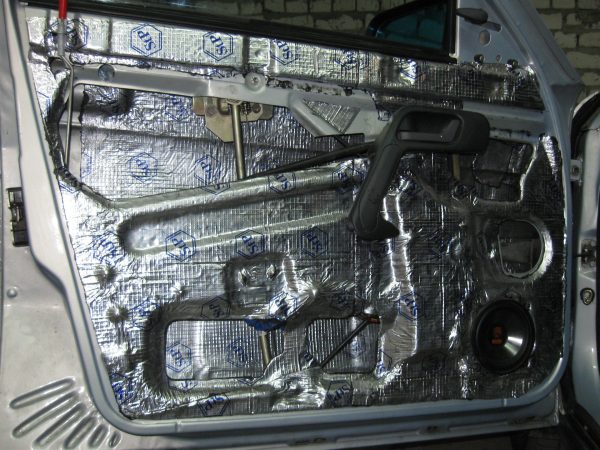 Vibration protection is glued to metal coated with an anti-corrosion compound
Vibration protection is glued to metal coated with an anti-corrosion compound - Install the first layer of "shumka" so that all drainage holes remain uncovered.
- Stick a second layer of soundproofing material - it closes the entire space of the door, including stiffeners and holes.

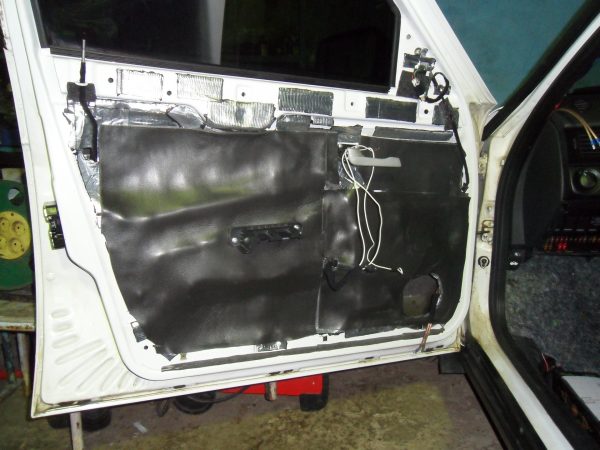 Noise isolation is also designed to enhance the effect of vibration isolation
Noise isolation is also designed to enhance the effect of vibration isolation - Apply decorative soundproofing material to the doors after they are fully assembled.

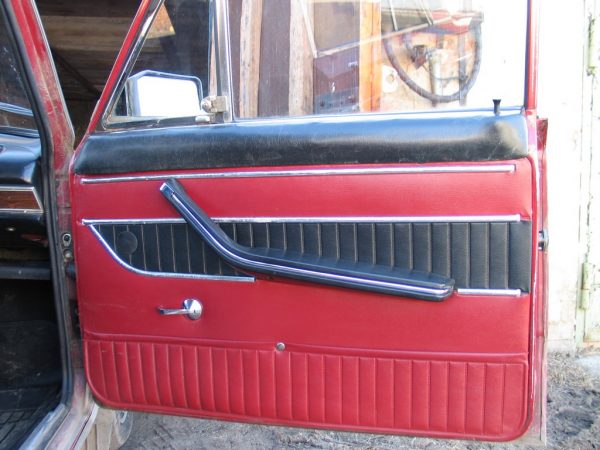 After installing the factory trim in place on the door, it is recommended to fix a decorative soundproofing coating
After installing the factory trim in place on the door, it is recommended to fix a decorative soundproofing coating
Soundproofing the engine compartment
For "three rubles" it is not necessary to isolate the engine compartment if the bottom and doors are soundproofed. But if you like silence on the road, you can handle this task. Noise insulation of the engine compartment is carried out in only one layer to prevent overheating of the engine compartment:
- Clean the inside of the hood from dust, carry out anti-corrosion treatment.
- Stick one layer of thin soundproofing material, make sure that it does not cover the stiffeners.
- Check that all the wires and lines of the engine compartment were not glued or covered with "shumka".

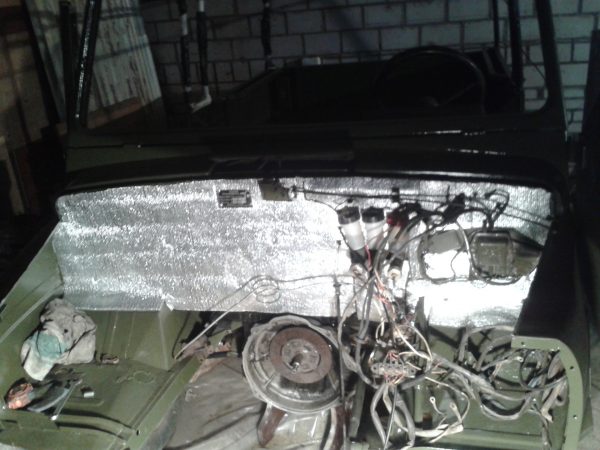 Noise isolation of the engine compartment involves gluing "shumka" on the inner surface of the hood
Noise isolation of the engine compartment involves gluing "shumka" on the inner surface of the hood
Video: your vibration isolation VAZ 2103
Seats in the "treshka"
By modern standards, the seats in the VAZ 2103 are unfashionable, uncomfortable and, moreover, unsafe for the driver's back. Indeed, in the 1970s, they did not think about amenities: the designers of the Volga Automobile Plant created, first of all, a means of transportation, and not a comfortable premium car.
The seats, sheathed in leatherette fabric, had very low backs: it was difficult for a person to stay in such “armchairs” for a long time. There were no headrests in the model at all. Therefore, it is not surprising that drivers often tried to somehow upgrade the seats or change them to more comfortable analogues.
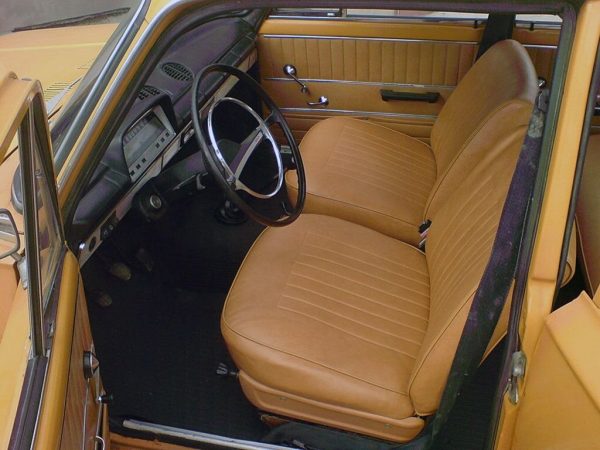

Video: VAZ 2103 seats
Which seats are suitable for VAZ 2103
A car enthusiast, on his own initiative, can easily change the seats on a VAZ 2103. Seats from the VAZ 2104 and 2105 are suitable for the “three-ruble note” without any major modifications and fittings, although they have different dimensions and shapes.
How to remove headrests on seats from older models
The ingenuity of the VAZ design sometimes confuses the owners. For example, on car forums, drivers quite seriously discuss the topic of how to remove the head restraints from the seats.
Good evening everyone! Such a question: the seats are native from the VAZ 21063, how are the head restraints removed? For me, they just move up and down, there are no latches, I can’t pull it up sharply. Reaches the height limit and that's it. How to take them off, I want to put on other covers
In fact, there are no secrets here. You just need to forcefully pull the element up. The headrest should be easy to remove. If difficulties arise, the metal holders should be sprayed with WD-40 grease.


How to shorten the seat back
If you want to put a seat from other cars on the “three-ruble note”, you will have to tinker a little. So, comfortable modern chairs will need to be shortened so that they freely enter the salon and securely fall into place.
To shorten the seat back, you will need to prepare the following tools:
- Bulgarian;
- scissors;
- ruler;
- needle and thread (staples).
Operating procedure
The first step is to make the appropriate measurements - how accurately it will be necessary to cut the back of the seat so that it enters the cabin. After measurements, we perform the following actions:
- Dismantle the new seat (remove the brackets and pull the fabric cover down).

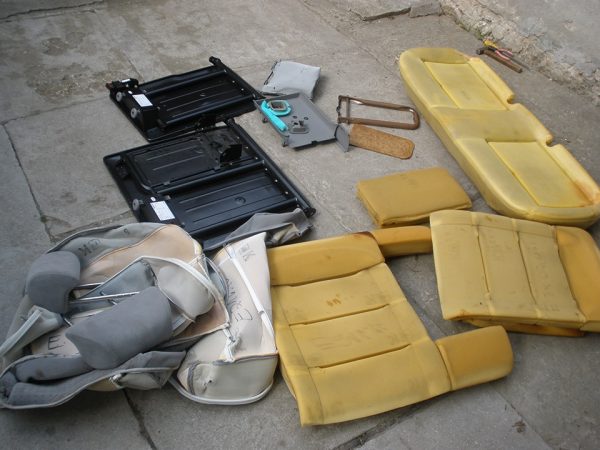 It is better to disassemble the seats in a clean place so that later you do not have to apply for dry cleaning services
It is better to disassemble the seats in a clean place so that later you do not have to apply for dry cleaning services - Cut the seat frame to the desired distance with a grinder.
- Try on a new seat in the salon.
- If there are shortcomings, refine the shape of the chair, saw off the extra corners, so that in the end the frame becomes more comfortable and easily fits into place in the cabin.
- After fitting, assemble the filler and upholstery, removing unnecessary centimeters. Sew the fabric carefully so that the seam is as even and aesthetically beautiful as possible.
- Install the chair in place, fixing it on the metal frame of the passenger compartment.

 The seat is installed on special rails in the floor
The seat is installed on special rails in the floor
Seat belts
It should be noted that in the mid-1970s there were no seat belts as an element of passive safety in VAZ cars. The first generation of "three rubles" was produced without them, since at that time there were no laws and state standards regulating this issue.
Serial equipment of all manufactured models of the Volga Automobile Building Plant with seat belts began at the turn of 1977-1978 and only on the front seats.
I don’t know for sure whether the first production models of the Six, produced in 76–77, were equipped with belts. , but in the year 78 they already put belts on them (I saw such a car myself), but usually people didn’t use them and just put them under the back seat
The first seat belts on the VAZ 2103 were manually adjusted. One end of the belt was fixed above the side window, the other - under the seat. The fastening was as reliable as possible, although it was carried out with one bolt.
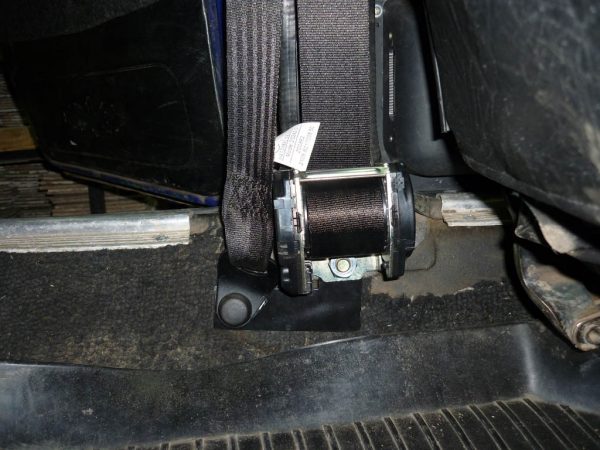

Interior lighting
Alas, in the first VAZ models, the designers practically did not pay attention to interior lighting at all. All that is there is the ceiling lamps in the door pillars and the ceiling lamp above the instrument panel and on the ceiling in the latest versions of the car.
However, the power of these devices was clearly not enough to see anything in the cabin at night. It is understood that the installed ceiling lights were standard equipment, instead of which amateurs could mount brighter lighting devices to their taste.
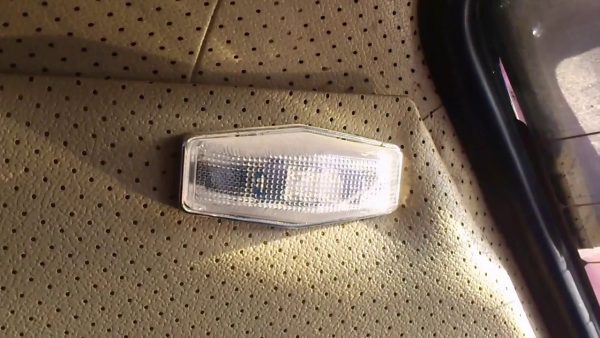

Fan in the cabin VAZ 2103
Luzar interior fans were mainly installed on the “three-ruble note”. This simple but reliable equipment allowed the driver to quickly switch the operating modes of the stove and adjust the direction of the air flow in the right direction.
The only drawback of this mechanism is a lot of noise during operation. However, the VAZ 2103 car itself cannot be called quiet, therefore, in general, the owners of the three-ruble note had no complaints about the stove motor.
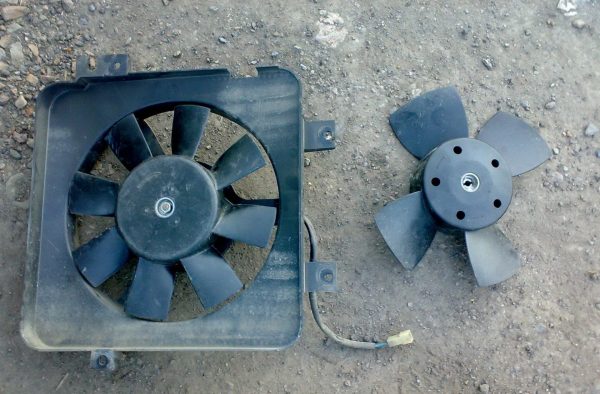

The first VAZ 2103 models became a breakthrough in the domestic automotive industry. However, over time, their success faded away, and today the “three-ruble note” is considered a VAZ classic, but only as a retro car without any comfort for the driver and passengers. The salon is ascetic and simple in the Soviet style, but in the USSR it was precisely such decoration that was considered the most thoughtful and fashionable.


